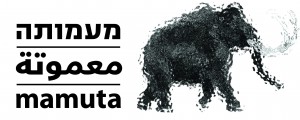Evolution of Structure

Evolution of Structure
Pesi Komar
Curator: Hagar Raban
The title of the exhibition, “Evolution of Structure,” is a puzzling one: normally we associate the concept of evolution with the animal world – different species developing and evolving over time to adapt to their environments – whereas structures are perceived as constant, permanent, resistant to change.
The structures created by Pesi Komar, in her sculpture and video works, undermine this conceptual distinction between the constant and the changeable. Treating the concepts of structurality and building themselves as raw materials, Komar allows these concepts to go through far-reaching changes, through disassembly, destruction, multiplication, erasure, concealing, and substantiation. The various works in the exhibition present processes of construction and disruption, of the simultaneous making and un-making of order.
The video work, Building, displayed in the innermost room of the gallery, is made of flickering outlines that recall items of furniture in an interior domestic space. As the video progresses, more and more vibrating forms are added, transforming the domestic space into an almost city-like environment. The deceptive image looks at first like a delicate sketch of white lines on a black background, when in effect they are plexiglass models, filmed using stop-motion. The quick transition between frames creates a feeling of fragmentation and instability, rendering the seemingly obvious structure as a shaky, blurry image that undermines the distinction between inside and outside and between form and material.
Screened in the adjacent room is the work Skins. The video contains 5 burnt structures, resembling architectural models, each turning slowly on its axis. Although their orderly and familiar forms have apparently been damaged by some destructive force, their fundamental geometrical structure is still identifiable. As such they keep us suspended in the space between physical and imagined existence, between real space and that which exists in memory alone.
The video work Tower of Babel is screened in the furthermost gallery. At the center of the video is a large white sculptural object made up of quadrangles. As in Building, here, too, its sharp structurality emerges in between the interior space, resembling a kitchen or pantry, and the exterior space of densely spaced buildings. Several human figures enter the space, painting the massive structure in black. Bit by bit, laboriously and meticulously, the parts of the structure disappear until all of its outlines fade into the black background, as if dissolving into a formless and borderless twilight zone. After the structure disappears a downpour begins, the heavy rain slowly washing away the painstakingly painted layers of color. Paradoxically, it is the rain – an uncontrollable natural phenomenon – that begins to restore the structure, intact in its clear presence in space and in time.
The work Evolution of Structure spreads out over the different exhibition rooms: a large-scale sculpture gradually invades the rounded walls of the space. It begins in one room, sprouting out from a small architectural form, and then, like a parasite that has found a suitable host, multiplies itself, growing and becoming more complex and monstrous until it takes over almost the entire structure. In a reproduction-like process the basic architectural element turns into a complex space: from object – to room – to house – to city. Like the frames in a video, the sculpture is cut into many stages, piled one on top of the other until a single whole space is created. The inanimate element, spreading and growing like a living creature, presents the possibility of a disrupted environment that has gotten out of control: like mildew, mold, or a plague spreading on the wall, it, too, is subject to the dictates of place and the limitations of physical space but at the same time annexes and conquers the space for its needs.
Each of the works in the exhibit presents us with a different process of construction, wherein the becoming of the structure already embodies the seed of its destruction that will bring about its disruption. These processes are examined through questions of power, space and materiality, wherein the common theme is the undermining of equilibrium: transitions from a state of calculated expansion to uncontrolled takeover; the construction of a solid, distinct space that ultimately leaves in its wake only an echo of memory; or an abstract and hidden place that gives rise to a new and unexpected discovery. The works raise questions of the permeability of personal space vis-à-vis public space and about the human ability – or inability – to control these spaces. Thus they invite us to observe and examine how out of the amorphous, the disrupted, and the chaotic, new structures can be reached.
Mamuta Art and Research Center
Artistic and general direction: Sala-Manca | Assistant curator and projects manager: Gali Katsir | Technical and exhibitions set up: Shimri Hagai | Text editing: Inbal Keidar | Arabic translation: Nagham Abuleil | English translation: Tamar Cohen | Graphic design: Maya Schleifer | Sound consultation: Amir Bolzman


